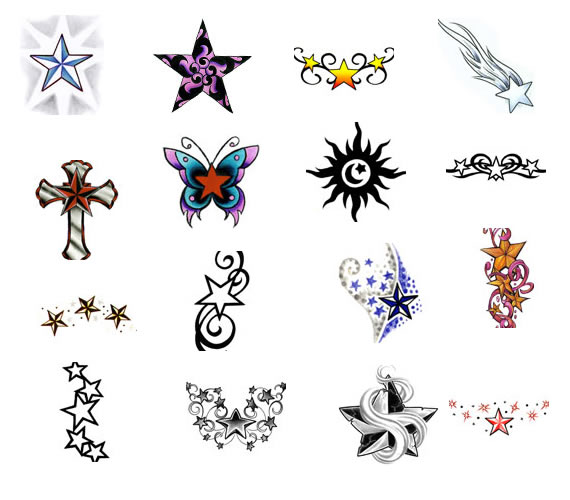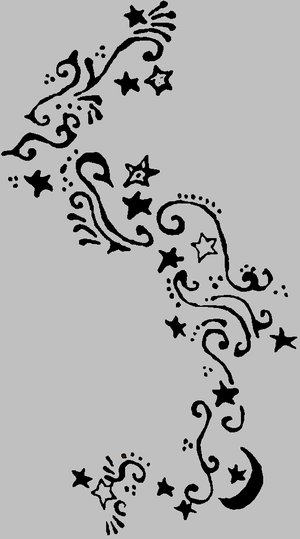Tattooing has been practiced for centuries in many cultures spread throughout the world. The Ainu, the indigenous people of Japan, traditionally had facial tattoos. Today one can find Berbers of Tamazgha (North Africa), Māori of New Zealand, Hausa people of Northern Nigeria, Arabic people in East-Turkey and Atayal of Taiwan with facial tattoos. Tattooing was widespread among Polynesian peoples and among certain tribal groups in the Taiwan, Philippines, Borneo, Mentawai Islands, Africa, North America, South America, Mesoamerica, Europe, Japan, Cambodia, New Zealand and Micronesia. Despite some taboos surrounding tattooing, the art continues to be popular in many parts of the world.
The Oxford English Dictionary gives the etymology of tattoo as "In 18th c. tattaow, tattow. From Polynesian tatau. In Tahitian, tatu." The word tatau was introduced as a loan word into English, the pronunciation being changed to conform to English phonology as "tattoo". Sailors on later voyages both introduced the word and reintroduced the concept of tattooing to Europe.
Tattoo enthusiasts may refer to tattoos as "Ink", "Tats", "Art", "Pieces", or "Work"; and to the tattooists as "Artists". The latter usage is gaining greater support, with mainstream art galleries holding exhibitions of both conventional and custom tattoo designs. Beyond Skin, at the Museum of Croydon, is an example of this as it challenges the stereotypical view of tattoos and who has them. Copyrighted tattoo designs that are mass-produced and sent to tattoo artists are known as flash, a notable instance of industrial design. Flash sheets are prominently displayed in many tattoo parlors for the purpose of providing both inspiration and ready-made tattoo images to customers.
The Japanese word irezumi means "insertion of ink" and can mean tattoos using tebori, the traditional Japanese hand method, a Western-style machine, or for that matter, any method of tattooing using insertion of ink. The most common word used for traditional Japanese tattoo designs is Horimono. Japanese may use the word "tattoo" to mean non-Japanese styles of tattooing.
In Taiwan, facial tattoos of the Atayal tribe are named "Badasun"; they are used to demonstrate that an adult man can protect his homeland, and that an adult woman is qualified to weave cloth and perform housekeeping.[citation needed]
The anthropologist Ling Roth in 1900 described four methods of skin marking and suggested they be differentiated under the names of tatu, moko, cicatrix, and keloid.
Tattooing has been a Eurasian practice at least since around Neolithic times. Ötzi the Iceman, dating from the fourth to fifth millennium BC, was found in the Ötz valley in the Alps and had approximately 57 carbon tattoos consisting of simple dots and lines on his lower spine, behind his left knee, and on his right ankle. These tattoos were thought to be a form of healing because of their placement which resembles acupuncture. Other mummies bearing tattoos and dating from the end of the second millennium BC have been discovered, such as the Mummy of Amunet from ancient Egypt and the mummies at Pazyryk on the Ukok Plateau. Pre-Christian Germanic, Celtic and other central and northern European tribes were often heavily tattooed, according to surviving accounts. The Picts were famously tattooed (or scarified) with elaborate dark blue woad (or possibly copper for the blue tone) designs. Julius Caesar described these tattoos in Book V of his Gallic Wars (54 BC). Tattooing in Japan is thought to go back to the Paleolithic era, some ten thousand years ago.[citation needed] Various other cultures have had their own tattoo traditions, ranging from rubbing cuts and other wounds with ashes, to hand-pricking the skin to insert dyes.
The Oxford English Dictionary gives the etymology of tattoo as "In 18th c. tattaow, tattow. From Polynesian tatau. In Tahitian, tatu." The word tatau was introduced as a loan word into English, the pronunciation being changed to conform to English phonology as "tattoo". Sailors on later voyages both introduced the word and reintroduced the concept of tattooing to Europe.
Tattoo enthusiasts may refer to tattoos as "Ink", "Tats", "Art", "Pieces", or "Work"; and to the tattooists as "Artists". The latter usage is gaining greater support, with mainstream art galleries holding exhibitions of both conventional and custom tattoo designs. Beyond Skin, at the Museum of Croydon, is an example of this as it challenges the stereotypical view of tattoos and who has them. Copyrighted tattoo designs that are mass-produced and sent to tattoo artists are known as flash, a notable instance of industrial design. Flash sheets are prominently displayed in many tattoo parlors for the purpose of providing both inspiration and ready-made tattoo images to customers.
 Girls Star Tattoo Designs 2011 |  our star tattoos gallery: |  star tattoo |  Star Tattoo Designs Tattoos |  Star Tattoo Designs |
 This kind of tattoo design is |  Star tattoo designs from |  The Magic of Star Tattoos |  Tattoo Designsstar Designs |  New Stars fot tattoos - Star |
The anthropologist Ling Roth in 1900 described four methods of skin marking and suggested they be differentiated under the names of tatu, moko, cicatrix, and keloid.
 Shooting Star Tattoos |  Star Tattoos |  New star tattoo designs sexy36 |  star-tattoo-designs |  Tattoos Design Stars |
 Star Tattoo Designs |  Star Designs for futures |  Star Tattoo Designs For |  Small And Cute Star Tattoo |  Star Tattoo Design - Lower |

No comments:
Post a Comment